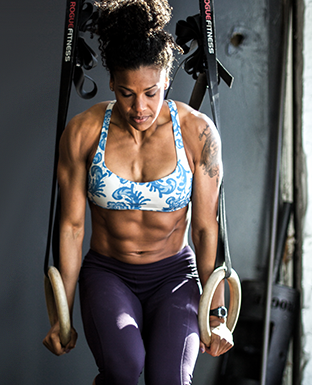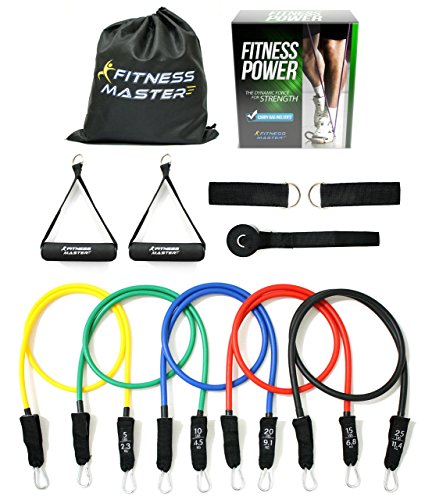Like many people, from lifelong avid athletes to those whose pursuit of fitness is more casual, I’ve experienced my share of injuries and pain while living an active lifestyle. These injuries have run the gamut—overuse injuries (fractured vertebrae, tendonitis), acute injuries (multiple ACL tears, sprains, strains), chronic conditions (arthritis).
Despite these experiences, I’m a firm believer that you don’t have to be in fear and pain while living an active lifestyle.
Injury recovery is as much a mental process as it is a physical one. In a traditional, or perhaps an old-school model, injury recovery commonly follows a sequence more or less like this:
- Consult with and receive treatment from a physician
- Complete rehab with a physical therapist
- Get the green light to return to activity.
Subsequently you may be on your own for the next steps. This equation leaves much to be desired with regard to addressing the fear and uncertainty that comes with returning to physical activities following an injury.
If you’re feeling overly cautious — or downright scared — about jumping back into training, even after being cleared by your doctor or physical therapist, that’s understandable.
There are a number of things you can do to bridge the gap and ease your transition from rehab and physical therapy back to doing the activities you love.
Structuring A Belief System That Doesn’t Normalize Pain and Fear
In bridging those gaps, a good starting point is acknowledging that you do not have to accept being in pain and fearing injury as a normal state. Our beliefs about the world and ourselves have a profound impact on every aspect of our lives, including injury recovery and the stressors and fears that injury can induce. The moment you decide that you can overcome your fears is the moment you become empowered to seek out solutions and take action, rather than resign yourself to fear.

Register for the Women’s Strength and Empowerment Weekend!
Spots are going fast, and it always sells out!
During my high school and college years I experienced a series of injuries that led to seven knee surgeries. Over years I spent significantly more time either hurt or in rehab than healthy. It became my norm. I began to identify with injury more than with health.
I see this happen frequently in others; people who have permanently written off their ability to do many different things, in part because they’ve adopted a belief system built around staying attached to their perceived limitations. Sometimes it’s simply more comfortable to draw a line in the sand (“I can’t lift, I have a bad back!”), than to step outside the comfort zone and look at the shades of grey between not being able to do anything at all, and perhaps being able to use progressions or variations to step into participation.
When we become too attached to our issues, we tend to spend more time talking and thinking about our limits than we do focusing on where we want to go. Where you’ve been in the past, or even where you are now is not where you have to stay.
The Power of Self-Talk
Any practice designed to establish an empowered mindset must take into account the power and influence of our self talk. We all engage in internal dialogue that can help or hinder our efforts to conquer fear after injury. When we aren’t aware of our self-talk it’s very easy to fall into deficit-focused language around the injuries we’re overcoming.
Actively replacing any negative self-talk with a compassionate, caring internal voice is vital.
It took me almost a decade after my last knee surgery to acknowledge that I kept repeating very negative thoughts to myself—cursing the previously injured leg, allowing myself to focus on the frustration of feeling a significant strength disparity, and basically wondering, “Why can’t my left leg be strong and healthy like my right?!”
Conscious, helpful self-talk could include eliminating deficit-focused language, or incorporating mantras that affirm your strength and resilience, no matter what challenges you face. Consistently affirm what you can do. Practice gratitude with regard to your body. Your precious body, whatever it’s been through, is your only one. Show it love!
Visualize Healthy, Pain-Free Movement
Whatever your activity of choice, visualization is a powerful tool in overcoming fears. Visualizing yourself completing your workouts or activities pain free offers both physical and psychological benefits. The brain-body connection is real. The practice of creating vivid mental imagery of how you want your body to move and feel during your workouts will bring you one step closer to actually achieving what you desire.
 Numerous studies have tied visualization practice to improved performance, and it’s even been shown effective in creating muscle memory for the movements you visualize. You brain doesn’t distinguish between visualizing an activity and actually performing it.1,2,3,4
Numerous studies have tied visualization practice to improved performance, and it’s even been shown effective in creating muscle memory for the movements you visualize. You brain doesn’t distinguish between visualizing an activity and actually performing it.1,2,3,4
To get the most impact from your visualization practice, try utilizing all your senses. What does the barbell feel like in your hands? What are the sights, smells, and sounds around you as you perform the movement? Both, when you’re sidelined with injury and as you return to activity (frankly anytime, as it improves confidence and performance in general), spending time visualizing yourself moving well and without pain will go a long way to increasing your confidence and reducing or eliminating fear.
Practices That Provide Peace of Mind
When we allow ourselves to listen to it, our intuition is an invaluable tool. To some extent fear following injury is a protective reaction. While it’s important not to settle into identifying with your injury and related fears, it’s also critical that you attend to them. By that I mean digging into what you are afraid of and why. There are a number of things you can put in place to help you do this.
Establish a care team in whom you have confidence. This may include, among others, your physician, physical therapist, coach or trainer. If you are diligent with your rehab or maintenance protocol and you are still not seeing improvement, seek out additional resources!  There is more than one way to do things, so don’t give up until you find what works for you.
There is more than one way to do things, so don’t give up until you find what works for you.
Not only is there more than one way to do things, but what works for you may evolve over time. Rehab, prehab, and maintenance should always be a part of your training. Consider an injury a signal for you to pay closer attention. Assess on an ongoing basis how effectively your practices are helping you remain pain free, and adjust them as needed. Like fitness itself, recovery is an ongoing process, not something from which you move on after checking it off the list.
Having these things in place and following an appropriate progression in your return to activity will help to identify and reduce unsubstantiated fears so that you can focus on the helpful signals that your body and mind are giving you.
Move forward with confidence that following injury you can once again participate in the activities you love — without fear!
Save $200! Early bird price for the Women’s Strength & Empowerment Weekend ends soon!
The Women’s Strength and Empowerment Weekend, powered by Girls Gone Strong, was designed to create a space for women to rise, teach, lead, learn, and connect with one another. Throughout the weekend you’ll hear from some of the most well-respected women in the world from every facet of the health and wellness industry, from PhDs to Registered Dietitians to top CrossFit athletes, and pre and postnatal fitness and body autonomy experts.

You’ll be surrounded by a group of like-minded, strong women who are there to lift each other up, and help each other become the best version of themselves in a warm, welcoming, and inclusive environment.
You will leave the weekend feeling heard, loved, supported, and empowered and most importantly knowing that you have finally found your tribe.
Last year we sold out in just 26 hours, so if you’re interested in attending, click the button below.
References
- Blanchfield, A.W., Hardy, J., De Morree, H.M., Stain, W., Mlarcora, S.M., (2014). Talking Yourself out of Exhaustion: The Effects of Self-talk on Endurance Performance. Med Sci Sports Exerc., 46(5), 998-1007
http://journals.lww.com/acsm-msse/pages/articleviewer.aspx?year=2014&issue=05000&article=00019&type=abstract - St Clair Gibson, A., Foster, C., (2007). The Role of Self-Talk in the Awareness of Physiological State and Physical Performance. Sports Med. 37(12), 1029-44
https://www.ncbi.nlm.nih.gov/pubmed/?term=The+Role+of+Self-Talk+in+the+Awareness+of+Physiological+State+and+Physical+Performance - Jones, L., & Stuth, G. (1997). The uses of mental imagery in athletics: An overview. Applied and Preventive Psychology, 6(2), 101-115.
http://www.sciencedirect.com/science/article/pii/S0962184905800162 - Warner, L., & McNeill, M. E. (1988). Mental Imagery and Its Potential for Physical Therapy. Physical Therapy, 68(4), 516-521. Accessed December 23, 2016.
http://ptjournal.apta.org/content/68/4/516.
All photos by Alison Gamble Photography
The post Overcoming Fear After An Injury appeared first on Girls Gone Strong.






